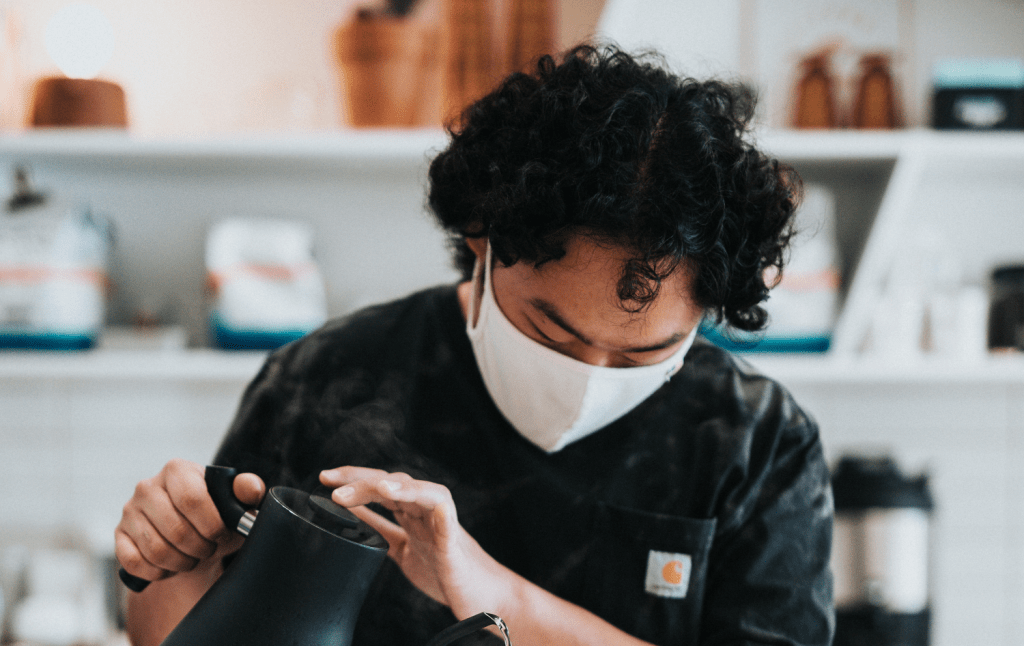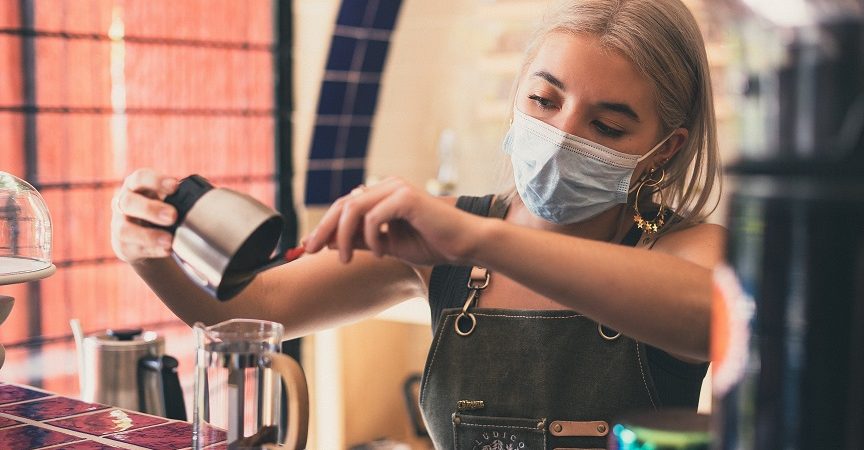How Cafe Culture is Shifting in the Wake of COVID-19
Coffee is a $6 billion industry in Canada. Whether sipping on a hot cup of joe at home or grabbing a latte from a local shop in the way to work, coffee is more than just a hot drink. It is a culture.
As with many foodservice industries, the COVID-19 pandemic has had a dramatic impact on how people are consuming coffee, which may have lasting effects. At this year’s RC Show 2021 ONLINE LIVE, panel, Robust Discussions on Coffee: Diversification & Shifting Cafe Culture presented by Dairy Farmers of Canada, Restaurants Canada brought in experts from the industry to talk about exactly how the pandemic has affected coffee culture and where they see it going as we enter a period of recovery.
Chair of the Coffee Association of Canada (CAC), Catherine Crozier, says that, according to their research, COVID-19 did not significantly shift Canadian’s desire for coffee. “We all needed the same caffeine fix pretty much day to day,” she said. “But of course, what we all know as part of the restaurant industry is where coffee was consumed with the lockdowns is what really changed.”
In terms of the QSR segment, data collected by the CAC indicated a marked decrease in people going to coffee shops to get their daily coffee. This is in line with the rest of the restaurant industry that has been devastated by COVID-19. Co-founder of Unified Data Labs, Kyle Brown, noted that as of January 2021, 2,180 restaurant locations across North America closed permanently due to the pandemic. According to Restaurants Canada, over 10,000 restaurants have closed since the beginning of the pandemic in Canada alone.

Sam Heath, head of retail for Tim Hortons, says the pandemic drove a big spike in coffee products sold at grocery and drug stores across the country. He says their experience at Tim Hortons backs up the CAC’s data that consumers still wanted their coffee, they just shifted where they were consuming it. Since March 2020, Tim Hortons has seen a rise across the board in the sales of their Tassimo pods, K-Cups and ground or whole bean and instant coffee. “We’ve seen some shifts in exactly what people are buying in retail, but ultimately that need to ‘have my coffee’ was probably a source of comfort and familiarity of ‘at least this hasn’t changed’ as the last year has gone by,” said Heath.
According to Heath, coffee innovation will continue to be a focus in the industry, with many consumers looking to experience a new drink or coffee product even after the pandemic is over. Brown says this sector innovation will reach past QSR and shops and into the rest of the restaurant industry. By looking at their database, which contains 450,000 restaurant menus, Unified Data Labs is seeing a lot more variety in the ways that restaurants are using coffee on their menus and the sky is the limit when it comes to innovation. “I think we’ll see more experimentation [with coffee] as a food product or as an ingredient for main courses and entrées,” he said.
Overall, COVID-19 or not, the data shows that Canadian consumers are always looking to get their coffee fix. Adaptation and innovation have been a huge part of coffee industry throughout the pandemic and this will continue to be a priority as it recovers from the impact of COVID-19. Overall, panelists agreed that no matter what the next couple of years bring, consumers will continue to prioritize coffee and welcome new products and services as the industry evolves.
Because of this, there has been a huge opportunity for coffee shops in Canada to move into the retail market. Heath says there are many QSRs that have their own packaged coffee and marketing this at-home option is a great way to increase their bottom line. “People know when they are going into restaurants that they are going to be drinking coffee at home and I think it is a big opportunity to increase your average cheque size from five dollars to 20 dollars,” he said.

Looking to the future, Health believes that there will be some interesting changes in the QSR coffee segment. Even if commuting drops by just 10 per cent, that represents a lot of business for coffee shops in the morning. Stores will have to figure out how to get customers into their locations perhaps later in the day for that mid-afternoon break to regain that revenue. “That’s a different focus for the restaurant than it was before,” he said.
That being said, Crozier believes that even if many people continue to work from home post-pandemic, they may still crave the experience of going into a coffee shop, interacting with the staff, and getting their favourite specialty beverage. “Who says we don’t walk there or drive our cars or go to the drive-thru and then come right back to our work from home experience,” she said. “We don’t know that yet so it’s going to be an interesting time for us to keep our fingers on the pulse of the consumer.”
While the pandemic has certainly created some lasting changes to the industry, Crozier believes there are some positives that have come out of adapting to the realities of COVID-19. The industry has seen a huge shift in ensuring safe environments for customers and employees and many businesses have also leaned into limited or no contact models with improved drive-thru accessibility and delivery.
According to CAC research, consumers have embraced these adaptations with curb-side pick up, delivery and drive-thru services all on the rise. “These are giant shifts,” she said. “We’ve come so far in just one year and it shows how adaptive our industry is.”
Health says that from the retail side they are also noticing an interesting shift in people experimenting with higher-end and specialty coffee products. This includes a trend towards more cold coffee, which Heath says may increase coffee consumption overall. “There may be an underlying trend towards more experimentation with types of coffee than people have had before,” he said.

Coffee shops and retailers across the country have been using their creativity to help keep their products top of mind throughout the COVID-19 pandemic. We reached out to Minna Van, Owner of Ca Phe Vietnamese Coffee House in Vancouver and Canadian Cheese Ambassador, David Beaudoin for their thoughts and insights into innovative pivots.
From diversifying offerings to inspiring new coffee combinations, here are a few ways that coffee shops can adapt to the ever-changing COVID-19 climate.
Work with local artists to create a pop-up shop in cafes.
This is a win-win as it draws customers into the café to look at the artists’ work while also giving vendors a place to display their art with the absence of craft fairs and markets or the closure of retail spaces.
Work with micro-food vendors to expand menus in cafes and help support businesses lost due to the pandemic.
Owner of Ca Phe Vietnamese Coffee House in Vancouver, Minna Van, found success with this offering authentic street snacks from Laos and Thailand through an online market.
Diversify your menu with food items that consumers already love like dairy and cheese.
Cheese can be a great accompaniment to coffee. According to Canadian
Cheese Ambassador, David Beaudoin, a lovely mascarpone, ricotta, or cream cheese like Boursin is a great accompaniment to a milky coffee. For something less creamy try an aged gouda and encourage customers to let it melt in their mouth with their coffee to discover notes of caramel and saltiness.
Invest in consumer packaged goods (CPG), partnering with local grocery store chains to get your products on their shelves.
Create coffee kits so that consumers can try making their favourite beverages while working from home.
Create a line of branded merchandise and equipment that consumers can use to make your authentic coffee at home.
Be sure to catch the replay of the Robust Discussions on Coffee: Diversification & Shifting Cafe Culture panel with RC Show ON DEMAND.
Use your RC Show 2021 login credentials to access all the content from the Show here, or register at rcshow.com.









